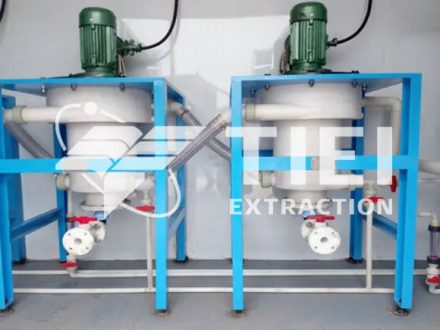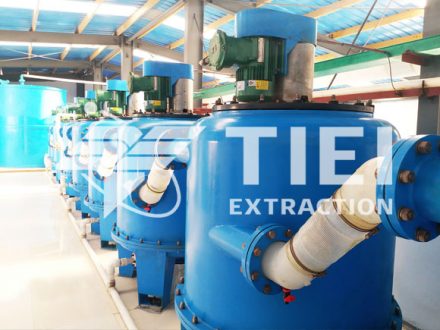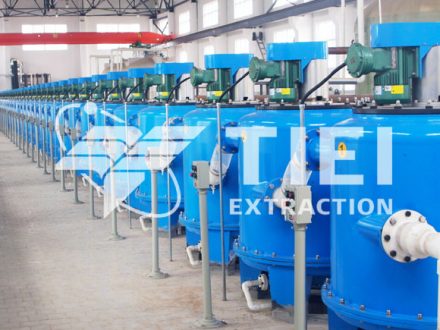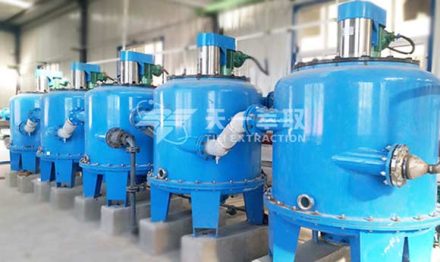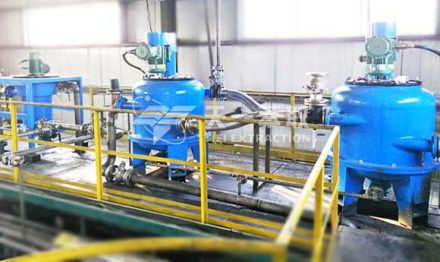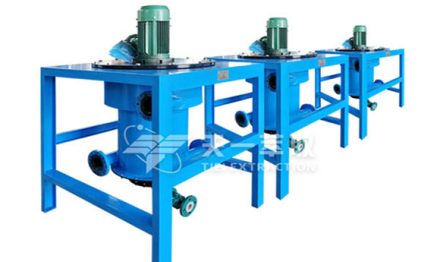
2-Naphthol, also known as β-naphthol or ethyl naphthol, is an important organic chemical raw material and dye intermediate. It is mainly used in the production of dyes, organic pigments, rubber antioxidants, as well as in the pharmaceutical and pesticide industries. During the refined naphthalene production process, large volumes of wastewater containing 2-naphthol are generated. This type of wastewater is characterized by high concentration, strong toxicity, and poor biodegradability, posing serious risks to both human health and the environment. According to experimental data, solvent extraction can be used to recover 2-naphthol from the wastewater, concentrate it into a raw material, and further produce high-performance water-reducing agents, thus turning waste into valuable resources.
The centrifugal extractor is a commonly used equipment for solvent extraction. Employing a multi-stage continuous extraction system not only reduces equipment investment, land occupation, and simplifies operation, but also enables effective recovery and reuse of the main pollutants. It has been widely applied in the extraction and separation of polar organic compounds involving reversible complexation reactions. In the chemical industry, the application of centrifugal extractors is expanding, and for the treatment of organic wastewater containing 2-naphthol, the process is simple, efficient, and highly effective.
2-Naphthol Wastewater Extraction Process
Extraction Stage
Based on the wastewater composition, a suitable extractant is selected. The extractant and wastewater are fed into the mixing zone of the centrifugal extractor through two feed pipes in a certain proportion. The mixing and mass transfer process is completed through the turbine disc and impeller. The two-phase separation process is completed by the centrifugal force generated by the drum.
After the first-stage extraction, the 2-naphthol wastewater changes from dark brown to light yellow. After the second-stage extraction, the wastewater becomes colorless and transparent. The COD removal rate exceeds 99%, ensuring stable equipment operation and effective extraction of organic pollutants from the wastewater.
Stripping Stage
After the organic phase extraction, the loaded extractant and alkaline solution are continuously fed into the centrifugal extractor. Through stripping, the alkaline solution strips the organic compounds from the extractant into the aqueous phase, mainly forming sodium naphthalenesulfonate, which is then used in the production of high-performance water-reducing agents.
The operation process for 2-naphthol wastewater treatment is highly convenient and efficient. Different equipment models are available to handle varying wastewater volumes, allowing customers to select the most suitable system based on their specific treatment capacity. In addition, the equipment material can be customized to meet different process requirements. For those interested in evaluating the extraction performance, laboratory-scale extraction units are available for pilot testing.
For detailed equipment information, welcome contact us.
Email: sales@tieiextraction.com
Whatsapp: +86 19069612820

